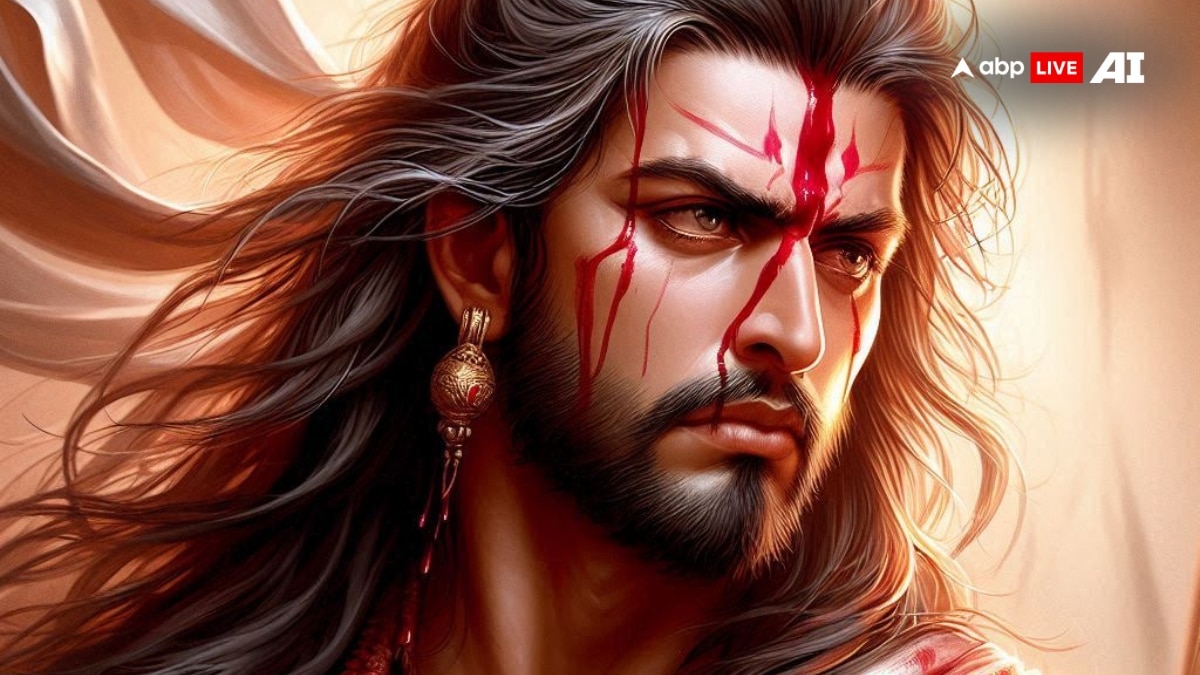Is Ashwatthama Alive? A Look At The Enigmatic Mahabharat Character Played By Amitabh Bachchan In Kalki 2898 AD
Mahabharat says Ashwatthama was cursed by Lord Krishna to wander the Earth in pain and hunger, his wound never healing. Ashwatthama 'sightings' according to various sources add to the intrigue.

Ashwatthama! A name that instantly piques the interest of Indian mythology enthusiasts is back in pop culture. This time it's none other than Big B Amitabh Bachan who is portraying the intriguing character from Mahabharat. Previously, the layered character has been played in movies and TV serials by prominent actors, such as Pradeep Rawat, M Prabhakar Reddy, Kunal Bakshi, among others.
Mahabharat's Ashwatthama is a complex character that goes through the extremes of every known emotion throughout the story. His name literally means "one who sounds like a horse". His father was Dronacharya, the guru to the Pandavs and Kauravs, and his mother was Kripi, the adopted daughter of King Shantanu — the great-grandfather of the Pandavs and Kauravs.
Ashwatthama is said to have been born with a gem on his forehead that protected him against old age, diseases, hunger, thirst and fatigue. It also gave him power over lower beings. The gem was called 'syron ratna', according to author Anand Neelakantan.
What makes Ashwatthama a mysterious character is his "curse" of "eternal life". He is among the seven "chiranjeevis [immortals]" in Hindu mythology. Apart from Ashwatthama, the other chiranjeevis in Hinduism are Lord Hanuman, Lord Vishnu's avatar Parashuram, Mahabharata author Ved Vyas, Raakshas king Raavan's brother Vibhishana, Asur king Mahabali, and Ashwatthama's maternal uncle Kripacharya, who was the 'kulguru (teacher)' of the Kuru clan.

Ashwatthama's Curse Of Immortality
While immortality is a boon for the other chiranjeevis, it is a curse for Ashwatthama because he is doomed to roam the mortal plane with a festering wound on his forehead.
But who cursed Ashwatthama and why?
The curse came from Lord Krishna, according to the Mahabharat epic. On the 18th day of the Mahabharat war, Duryodhan appointed Ashwatthama the chief of his army and asked him to finish the Pandavs. Ashwatthama, who was among the most skilled warriors on the field, was already angry at the 'deceptive' manner in which his father Dronacharya was killed on the Kurukshtera battlefield. He decided to avenge his father's death and please Duryodhan by attacking the Pandav camp in the dead of the night.
He tried to end the Pandav lineage by killing all on the Pandav side, including Arjun's son Abhimanyu's unborn child. However, Krishna saved the foetus. He then ordered Ashwatthama to cut out the 'Syron ratna' and cursed him to roam the Earth for eternity with a wound on his forehead that would only rot and never heal. He would also lose all his powers and be plagued by pain, hunger, and thirst.
Is Ashwatthama Alive?
This is where the line between mythology and history becomes blurred. While all of this is believed to be spiritual tales and an integral part of Hindu mythology, claims of Ashwatthama having been seen create scope for a debate on historical elements of the Mahabharat.
There have been several claims of sightings of a "tall man with a big and smelly wound, akin to leprosy, on his forehead". While these "sightings" are mostly unverified, the stories do weave an aura of mystery around Ashwatthama.

READ ON ABP LIVE | Kalki 2898 AD Becomes Fastest India Film To Surpass $1 Million In Pre-Sales In The USA
Ashwatthama 'Seen' At Various Points In History
The most famous story speaks of a doctor in Madhya Pradesh who was visited by a patient who had a wound on his forehead he had never seen before. According to a Mumbai Mirror report, the doctor described the wound as one inflicted when a part of his "brain had been pulled out".
The man told the doctor that he had tried all sorts of medicines and even stitching it but nothing seemed to work. The doctor jokingly remarked that he must be 'Ashwatthama' to be roaming around with an eternal wound. However, he claimed, the man vanished without a trace the very next moment.
According to a piece published by Speaking Tree, Ashwatthama is believed to be still living deep within caves near Aseergarh Fort in Madhya Pradesh. Tormented by the pain and isolation, Ashwatthama decided to seek relief by worshipping Lord Shiv. It is said that he goes to the Gupteshwar Mahadev temple daily via a secret passage known only to him and prays to Lord Shiv.
According to some accounts, a tall person with leprosy has been seen in the region asking for oil and medicines to ease his pain.
Another Speaking Tree article quotes Chand Bardai's work 'Prithviraj Raso' to claim that Prithviraj Chauhan met Ashwatthama after the second battle of Tarain with Muhammad Ghori in 1192. The article claims that Prithviraj met an old man in a forest with a festering wound on his forehead. He assured the man that he would cure the wound. But after a week, when there was no improvement, Prithviraj realised who he was. But soon after that the old man walked away never to be seen again.
'Pilot Baba' Wing Commander Kapil Singh, who took to spirituality after a stint in the Indian Air Force, also claimed to have seen him, according to several online forums. In a book said to have been written by 'Pilot Baba', he says Ashwatthama told him: "Kapil, I am Acharya Dronacharya's son Ashwathama. I was the senapati (the chief warrior) during the days of the historical Mahabarat... Once in a while, I go to the Himalayas to meet Kripa [also a chiranjeevi] and Vidur [a form of Yam, the God Of Death & Justice]."
There are some accounts of a leprosy-stricken tall man walking along the banks of the Narmada in Gujarat we well. It is said that flies and other bugs fly around his head but he would walk on unbothered as if used to the situation for a long time.
Whether these tales are true or just figments of an active imagination is a topic of debate. But they are undeniably fascinating and make one wonder if Mahabharat was a historical fiction or fictional history.





































